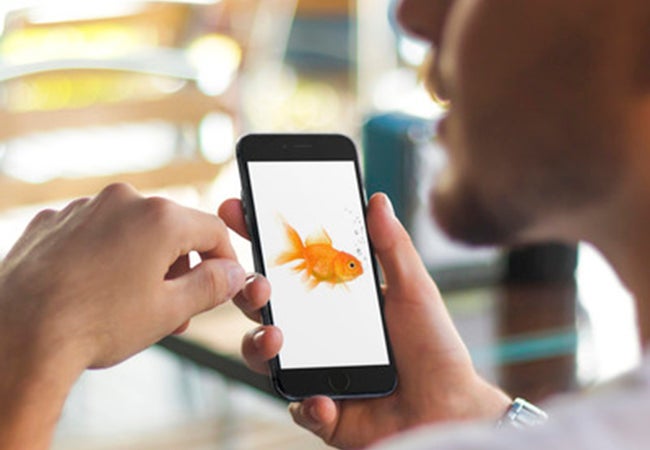Our attention span is now less than that of a goldfish, Microsoft study finds
But it might be because we are smarter than ever and crave more information

Your support helps us to tell the story
From reproductive rights to climate change to Big Tech, The Independent is on the ground when the story is developing. Whether it's investigating the financials of Elon Musk's pro-Trump PAC or producing our latest documentary, 'The A Word', which shines a light on the American women fighting for reproductive rights, we know how important it is to parse out the facts from the messaging.
At such a critical moment in US history, we need reporters on the ground. Your donation allows us to keep sending journalists to speak to both sides of the story.
The Independent is trusted by Americans across the entire political spectrum. And unlike many other quality news outlets, we choose not to lock Americans out of our reporting and analysis with paywalls. We believe quality journalism should be available to everyone, paid for by those who can afford it.
Your support makes all the difference.Humans have become so obsessed with portable devices and overwhelmed by content that we now have attention spans shorter than that of the previously jokingly juxtaposed goldfish.
Microsoft surveyed 2,000 people and used electroencephalograms (EEGs) to monitor the brain activity of another 112 in the study, which sought to determine the impact that pocket-sized devices and the increased availability of digital media and information have had on our daily lives.
Among the good news in the 54-page report is that our ability to multi-task has drastically improved in the information age, but unfortunately attention spans have fallen.
In 2000 the average attention span was 12 seconds, but this has now fallen to just eight. The goldfish is believed to be able to maintain a solid nine.
"Canadians [who were tested] with more digital lifestyles (those who consume more media, are multi-screeners, social media enthusiasts, or earlier adopters of technology) struggle to focus in environments where prolonged attention is needed," the study reads.
"While digital lifestyles decrease sustained attention overall, it’s only true in the long-term. Early adopters and heavy social media users front load their attention and have more intermittent bursts of high attention. They’re better at identifying what they want/don’t want to engage with and need less to process and commit things to memory."

Anecdotely, many of us can relate to the increasing inability to focus on tasks, being distracted by checking your phone or scrolling down a news feed.
Another recent study by the National Centre for Biotechnology Information and the National Library of Medicine in the US found that 79 per cent of respondents used portable devices while watching TV (known as dual-screening) and 52 per cent check their phone every 30 minutes.
One professor believes it's an entirely natural response though – as we consume an increasing volume of information and digest it faster, our appetite for it grows.
"When we first invented the car, it was so novel. The thought of having an entertainment device in the car was ridiculous because the car itself was the entertainment," said Bruce Morton, a researcher with the University of Western Ontario’s Brain & Mind Institute.
"After a while, travelling for eight hours at a time, you’d had enough of it. The brain is bored. You put radios in the car and video displays. Why? Because after the first 10 minutes of the drive I’ve had enough already. I understand this.
"Just because we may be allocating our attention differently as a function of the technologies we may be using, it doesn’t mean that the way our attention actually can function has changed.
"Digital technologies dovetail seamlessly into the information processing abilities of our brain."
Join our commenting forum
Join thought-provoking conversations, follow other Independent readers and see their replies
Comments